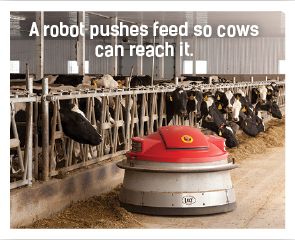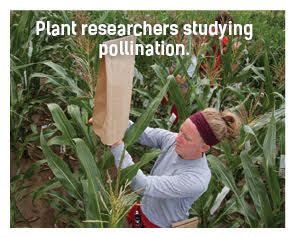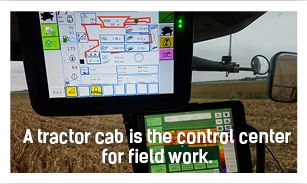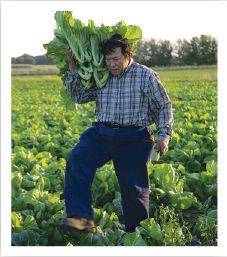Minnesota Agriculture: 1970 – Today
Imagine a farm family from the 1800s stepping onto a modern farm today. How would they respond to all the changes?
Science and Technology Take the Lead
 Computers manage farm businesses, keep crop and animal records, and so much more. Computers are built into many farm machines. A robot may milk a cow. A drone may fly over fields surveying land or finding insects. Barns are temperature-controlled to keep animals comfortable.
Computers manage farm businesses, keep crop and animal records, and so much more. Computers are built into many farm machines. A robot may milk a cow. A drone may fly over fields surveying land or finding insects. Barns are temperature-controlled to keep animals comfortable.
Plant and Animal Breeding
 Scientists have improved plants and animals through careful breeding for many years. Today’s farmer produces a leaner meat animal, dairy cows that give more milk, and grows crops like wheat and corn that are more insect-, drought-, and disease-resistant. For example, corn that used to be knee-high by the fourth of July in 1900 is often shoulder-high by that date today. Consumers get higher quality and more abundant plant or animal food products.
Scientists have improved plants and animals through careful breeding for many years. Today’s farmer produces a leaner meat animal, dairy cows that give more milk, and grows crops like wheat and corn that are more insect-, drought-, and disease-resistant. For example, corn that used to be knee-high by the fourth of July in 1900 is often shoulder-high by that date today. Consumers get higher quality and more abundant plant or animal food products.
Precision Farming
 Technology is important to farmers today. They use digital software, drones, laptops, cell phones, and GPS systems. Electronic devices map every inch of a field and show how to manage it for best production. They control the number of seeds planted, show how much fertilizer is needed, tell exactly where to kill weeds, and more.
Technology is important to farmers today. They use digital software, drones, laptops, cell phones, and GPS systems. Electronic devices map every inch of a field and show how to manage it for best production. They control the number of seeds planted, show how much fertilizer is needed, tell exactly where to kill weeds, and more.
New Flavors in Minnesota Agriculture
 Over 7% of Minnesota’s population was born in another country. Some immigrants moved to small towns and rural areas to work in agriculture. For example, jobs at farms, processing, and meatpacking businesses attracted seasonal workers and new immigrants to Worthington, Willmar, and other Minnesota cities. Immigrants make huge contributions to Minnesota agriculture.
Over 7% of Minnesota’s population was born in another country. Some immigrants moved to small towns and rural areas to work in agriculture. For example, jobs at farms, processing, and meatpacking businesses attracted seasonal workers and new immigrants to Worthington, Willmar, and other Minnesota cities. Immigrants make huge contributions to Minnesota agriculture.
New Beginning for American Indian Agriculture
Native Americans have farmed in Minnesota for centuries. In 1987, the Intertribal Agriculture Council was created to help improve Indian Agriculture. The Council has programs that assist in adding high tunnels for a vegetable producer, support the Red Lake Nation wild rice production, and formed an Intertribal Maple Syrup Producers Coop.
Today’s supermarkets are packed with hundreds of foods for us to choose from, including locally grown. Some stores have whole sections of food from countries around the world. Farmers markets, food cooperatives, and restaurants also offer a great variety of foods. What do you enjoy most about the diversity of Minnesota’s foods?
